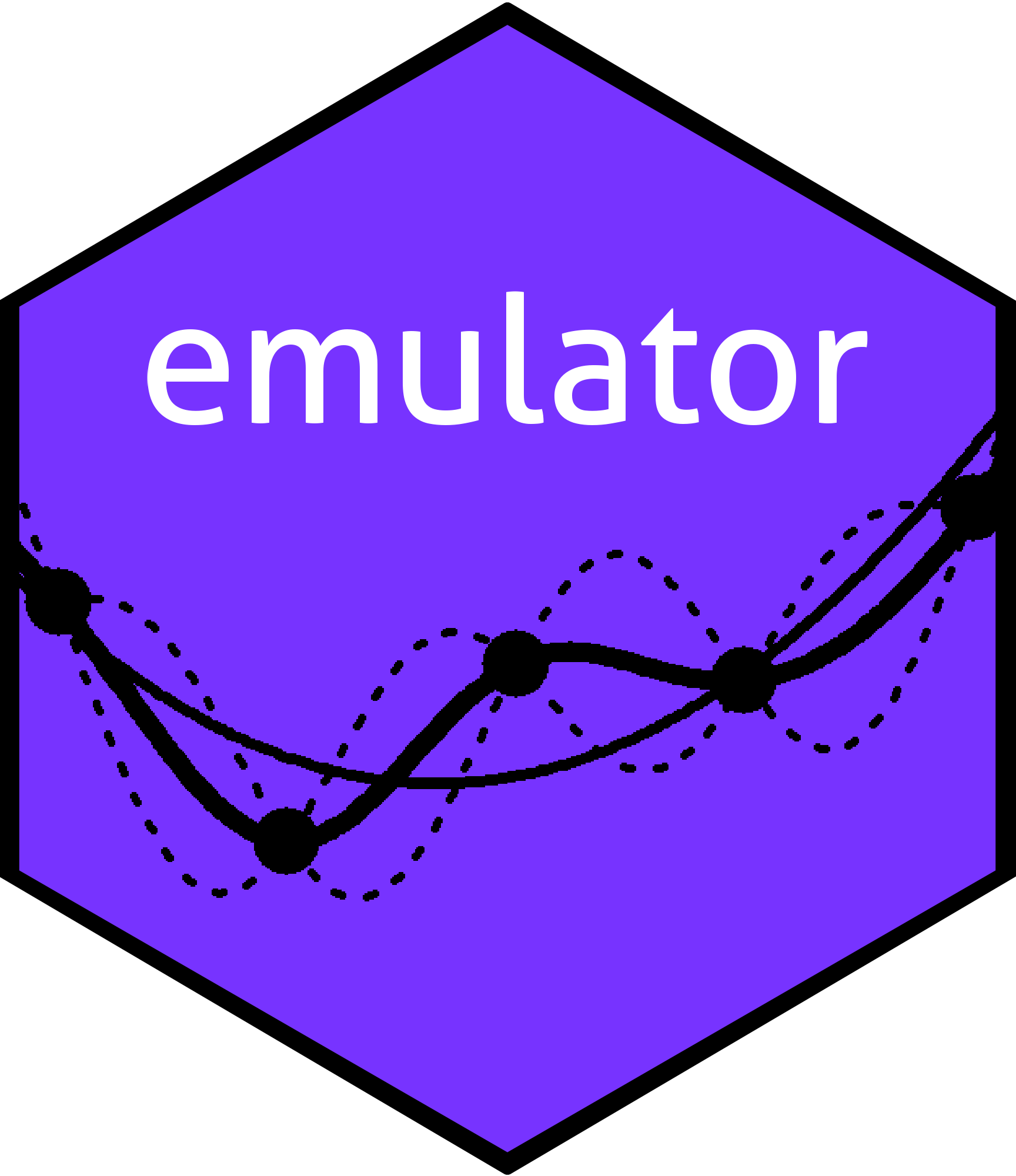

To cite the emulator package in publications please use
Hankin 2005. The emulator package provides R-centric
functionality for working with Gaussian processes. The focus is on
approximate evaluation of complex computer codes. The package is part of
the the BACCO suite of software.
You can install the released version of permutations from CRAN with:
# install.packages("emulator") # uncomment this to use the package
library("emulator")
#> Loading required package: mvtnormThe package is maintained on github.
emulator package
in useSuppose we have a complicated computer program which takes three parameters as input, and we can run it a total of seven times at different points in parameter space:
val
#> alpha beta gamma
#> [1,] 0.7857 0.9286 0.6429
#> [2,] 0.0714 0.3571 0.2143
#> [3,] 0.5000 0.2143 0.7857
#> [4,] 0.3571 0.7857 0.3571
#> [5,] 0.9286 0.5000 0.0714
#> [6,] 0.2143 0.0714 0.5000
#> [7,] 0.6429 0.6429 0.9286
d
#> [1] 3.96 1.06 2.93 2.49 2.11 1.26 4.61Above, val shows the seven points in parameter space at
which we have run the code, and d shows the output at those
points. Now suppose we wish to know what the code would have produced at
point \(p=(0.5, 0.5, 0.5)\), at which
the point has not actually been run. This is straightforward with the
package:
p <- c(0.5,0.5,0.)
fish <- c(1,1,4)
A <- corr.matrix(val,scales=fish)
interpolant(p, d, val, A = A, scales=fish, give=TRUE)
#> $betahat
#> const alpha beta gamma
#> -0.363 1.221 1.905 3.072
#>
#> $prior
#> [,1]
#> [1,] 1.2
#>
#> $beta.var
#> const alpha beta gamma
#> const 0.995 -0.510 -0.184 -0.713
#> alpha -0.510 0.950 -0.275 0.172
#> beta -0.184 -0.275 0.914 -0.192
#> gamma -0.713 0.172 -0.192 1.524
#>
#> $beta.marginal.sd
#> const alpha beta gamma
#> 0.997 0.975 0.956 1.234
#>
#> $sigmahat.square
#> [1] 0.64
#>
#> $mstar.star
#> [,1]
#> [1,] 1.42
#>
#> $cstar
#> [1] 0.165
#>
#> $cstar.star
#> [1] 0.2
#>
#> $Z
#> [1] 0.358Above, object fish is a vector of roughness length
(“scales”) corresponding to the small-scale covariance properties of our
function. This may be estimated from the problem or from the datapoints.
Matrix A is a normalized variance-covariance matrix for the
points of val.
The output gives various aspects of the Gaussian process associated
with the original observations. The most interesting one is
mstar.star which indicates that the best estimate for the
code’s output, if it were to be run at point \(p\), would be about 2.41.
R. K. S. Hankin 2005. “Introducing BACCO, an R bundle
for Bayesian analysis of computer code output”. Journal of
Statistical Software, 14(16)